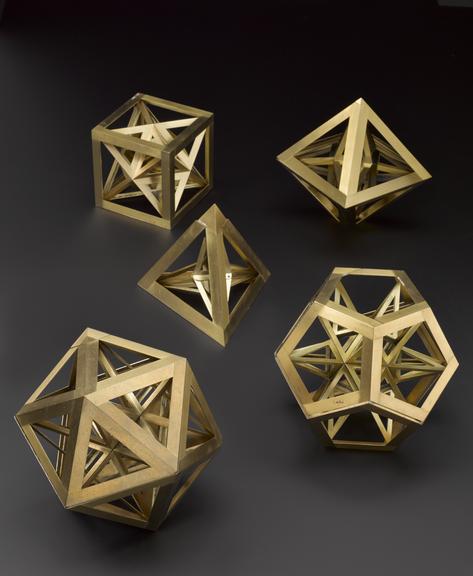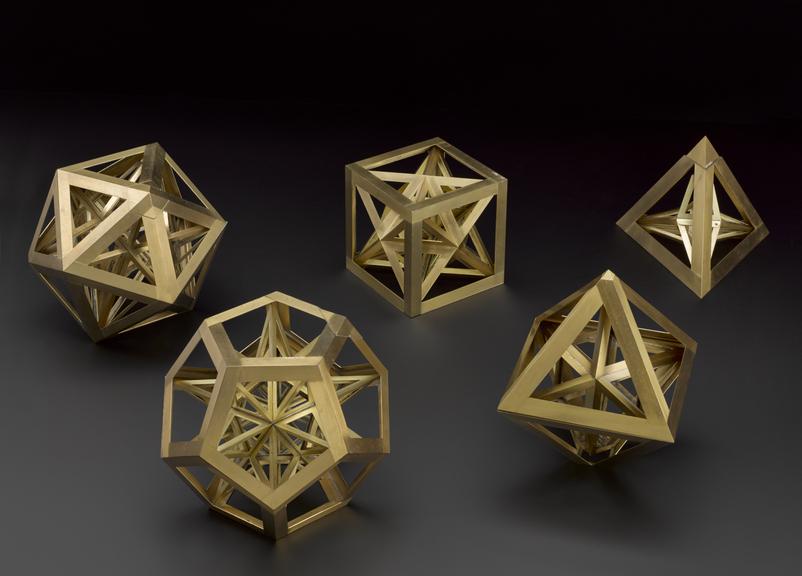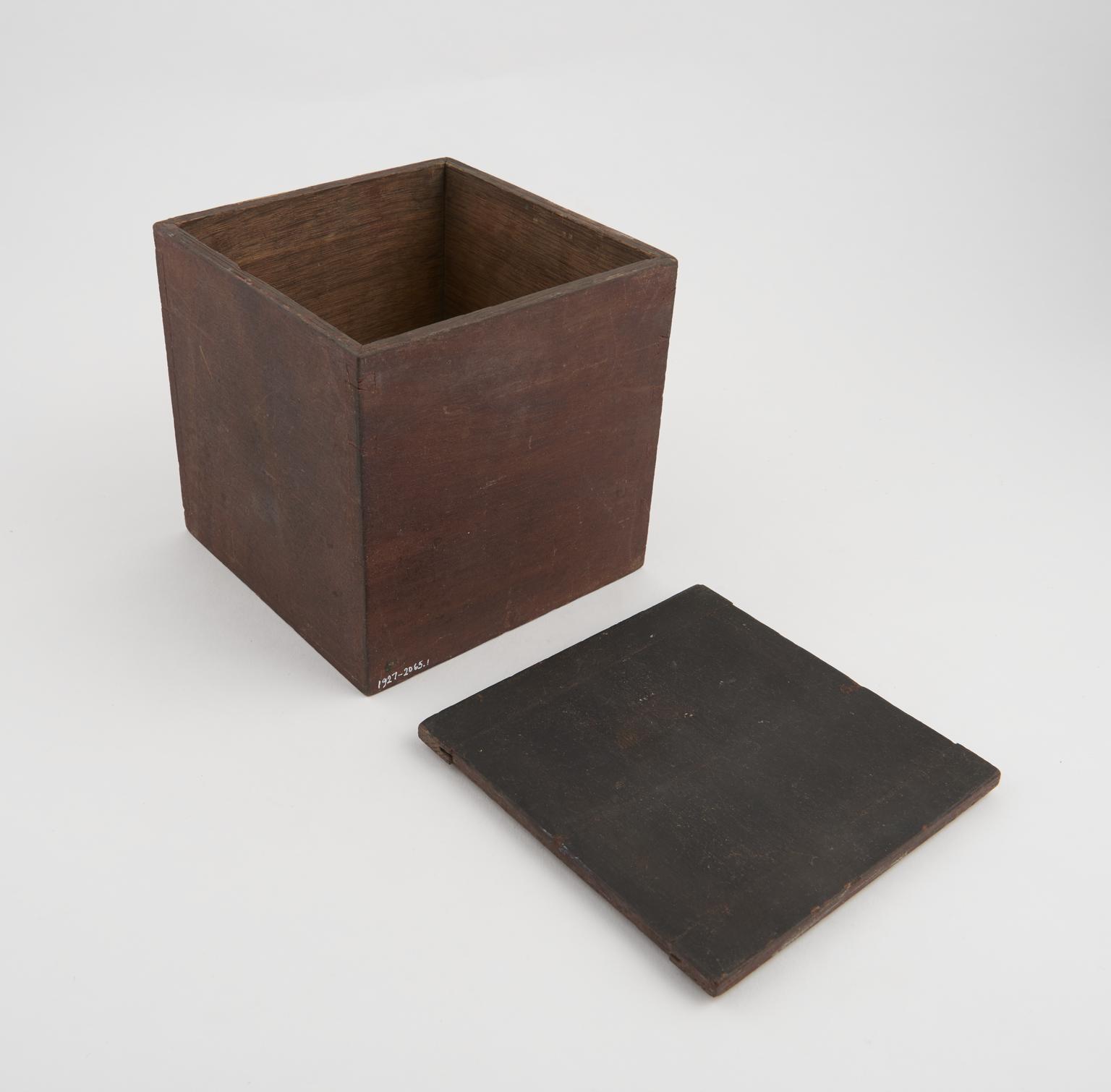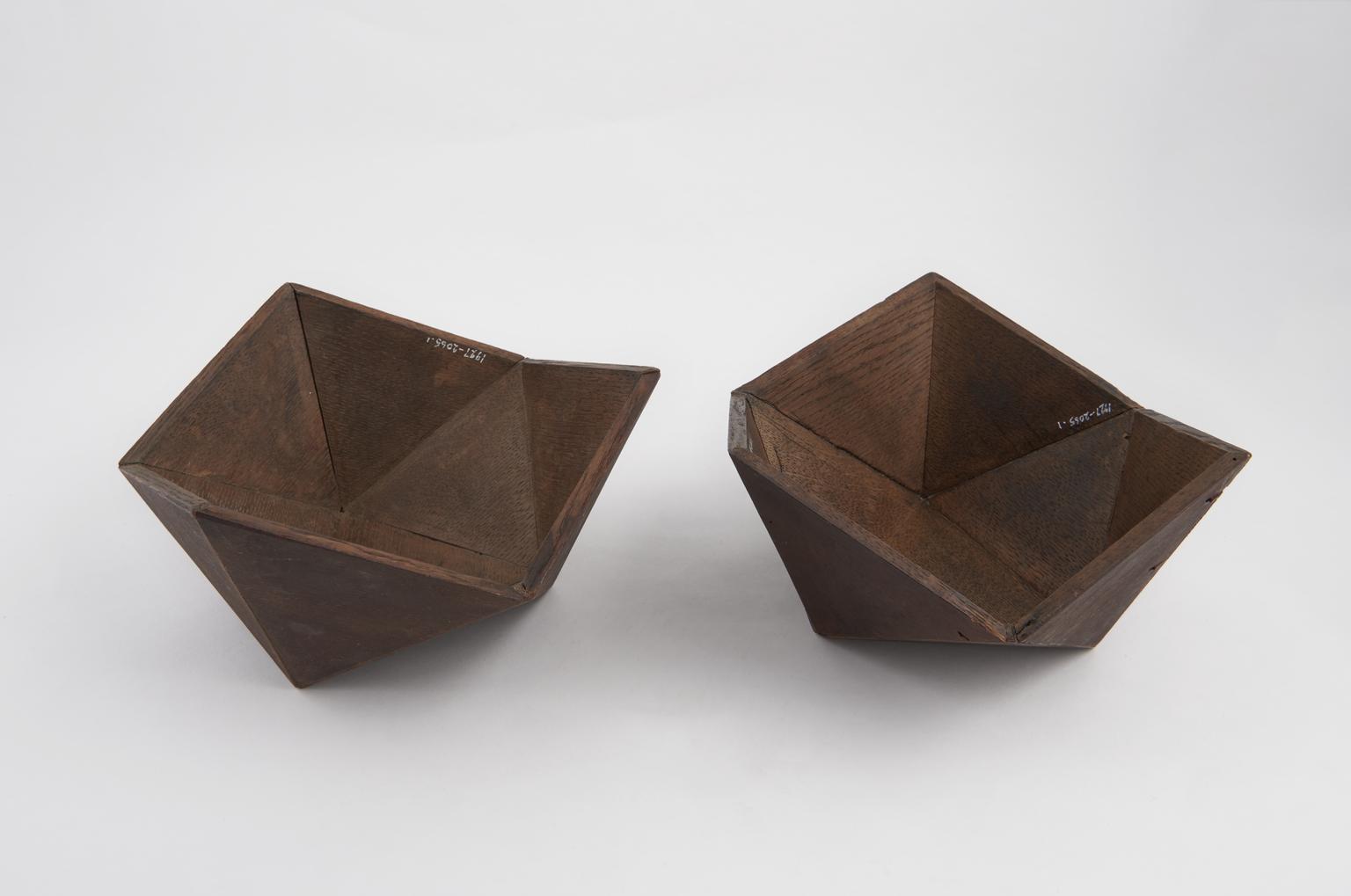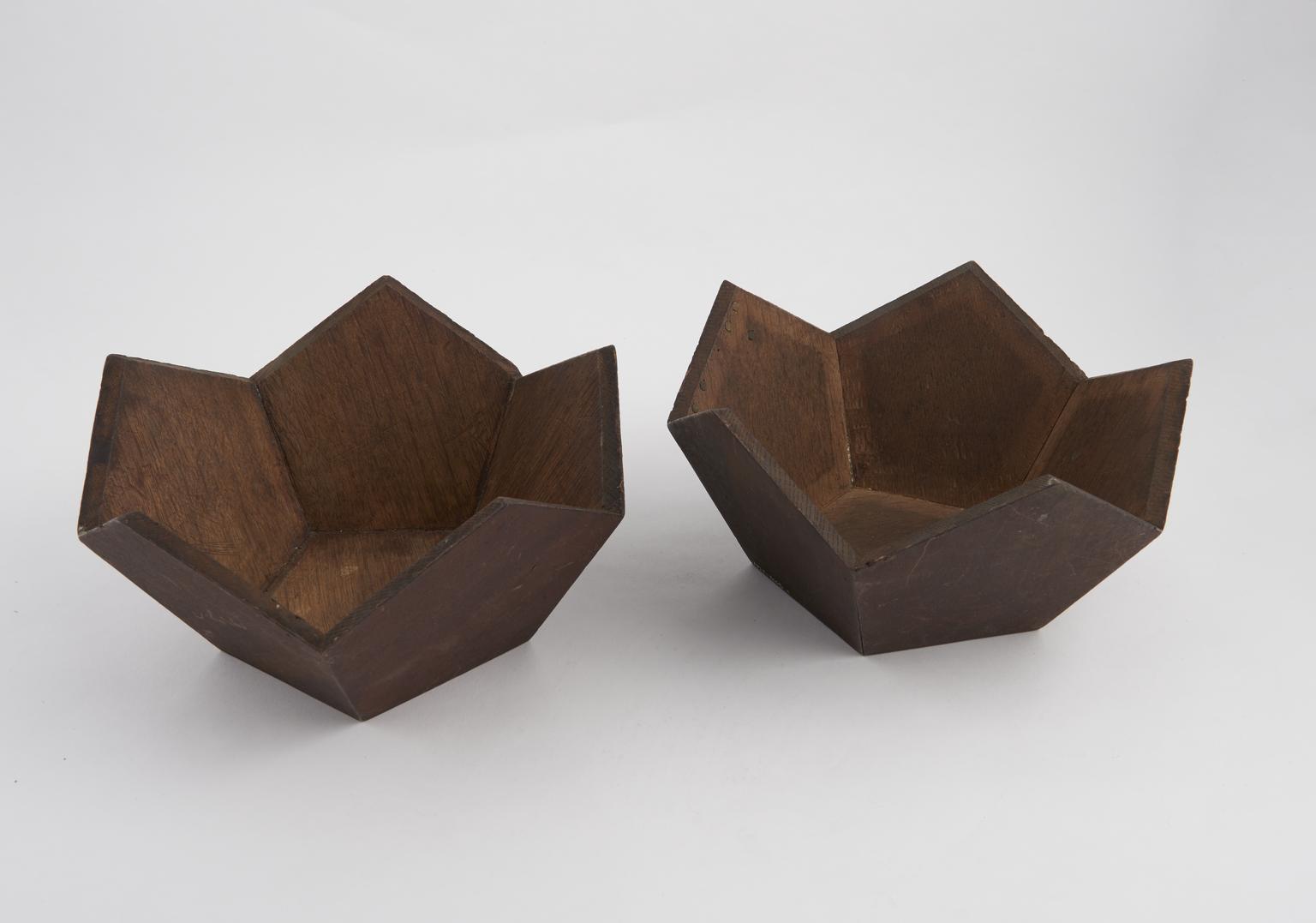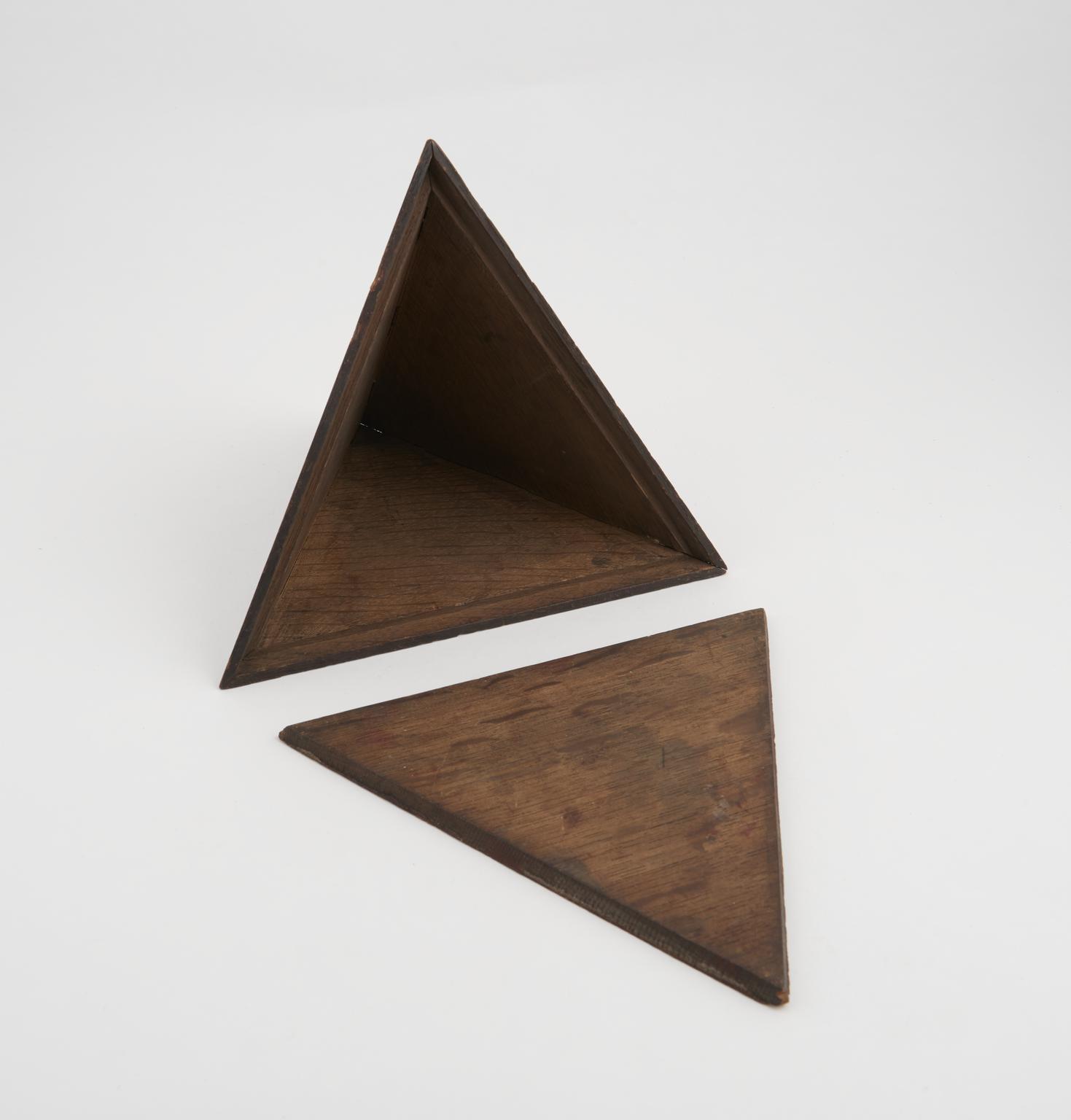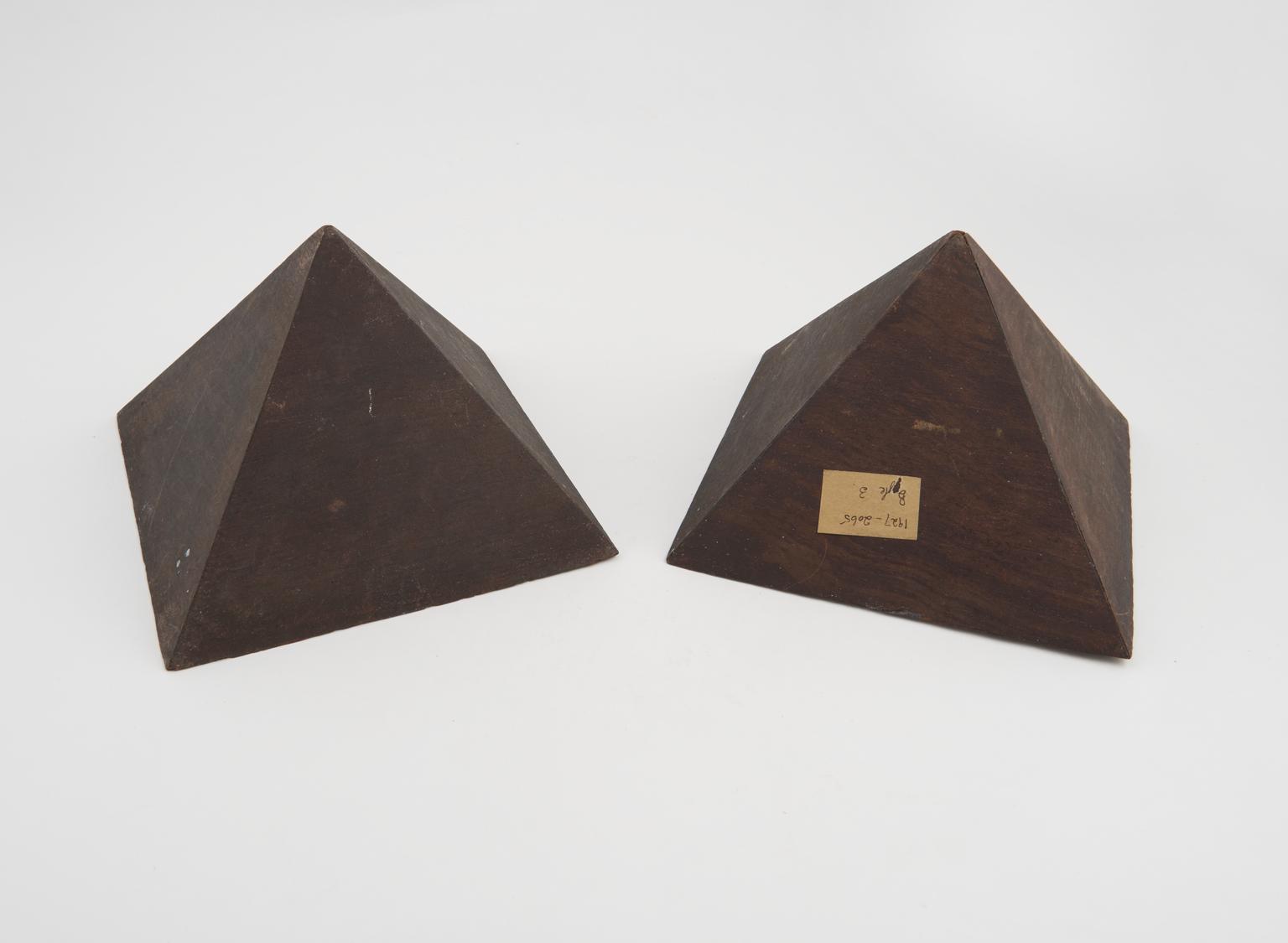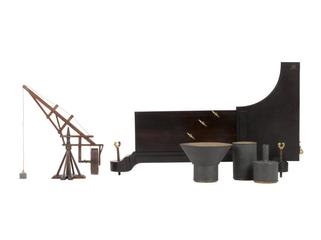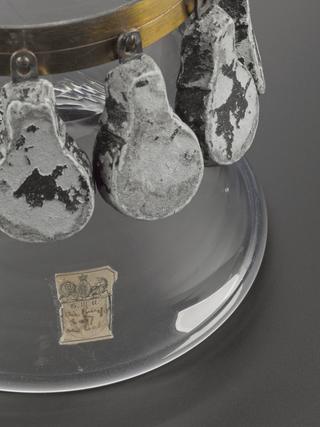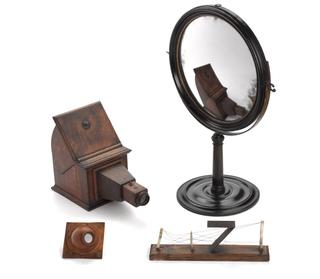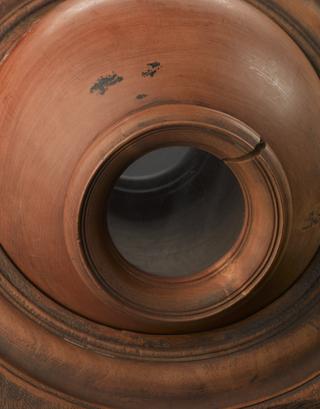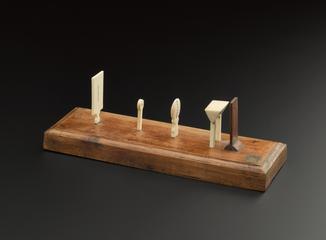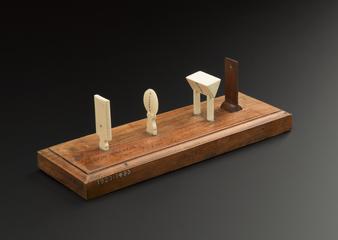Five Regular Skeletal Polyhedra.
The five regular skeletal polyhedra with inscribed stars.
More
Five skeletal polyhedra with inscribed stars, and their boxes. Since ancient times it has been known that there are only five regular polyhedra: three-dimensional figures which appear the same when viewed from any angle. This is the largest set associated with Robert Boyle (1627-1691) and contains a tetrahedron, cube, octahedron, dodecahedron and icosahedron.
- Materials:
- brass (copper, zinc alloy)
- Object Number:
- 1927-2065/1 Pt1
- type:
- polyhedra
- Image ©
- The Board of Trustees of the Science Museum





